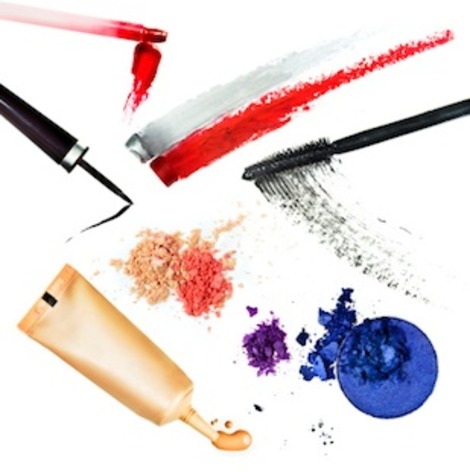Heavy Metals Found in Many Cosmetics: Not Listed on Labels
/Cosmetics are loaded with heavy metals. Zeolite can help protect woman from the dangerous heavy metals that are in these cosmetics by pulling out the toxins before they can do damage to the body.
In light of recent news that the FDA found lead in 400 brands of lipstick, Yahoo! Shine took a look at other products containing potentially hazardous ingredients. Historically, women have risked their health for beauty by using cosmetics laden with poisons. It's reported that Queen Elizabeth's face became so disfigured from lead-contaminated makeup, she had all the mirrors in her palace removed. In 18th century France, courtesans applied vermilion rouge, which contained sulfur and mercury, and suffered damage to their teeth, livers, and nervous systems as a result. While the levels are much lower, according to a 2011 report by Environmental Defense, an Ontario-based research group, dangerous heavy metals still lurk in lip gloss, mascara, foundation, blush, eye shadow, and eyeliner.
The researchers tested a total of 49 common products selected from the cosmetic bags of six average Canadian women. They found that every product contained at least one of seven heavy metals including arsenic, cadmium, lead, nickel, beryllium, thallium, and selenium. Lead, a known neurotoxin, showed up in 96% of the items. The Centers for Disease Control and Prevention advises that lead exposure is not safe at any level. Heavy metals are considered a by-product of manufacturing and it's worth noting that none were listed in the ingredients lists on the cosmetics' labels.
There is scientific debate about safe levels of heavy metals in the body. The Campaign for Safe Cosmetics, which pushed for the FDA's recent scrutiny of lipstick, points out that, "Individual exposures to these metals in small amounts are unlikely to cause harm, but heavy metals can build up in the body over time and may increase risk for a variety of health problems." The U.S. Department of Labor links arsenic to stomach pain, nausea, vomiting, diarrhea, and cancer of the bladder, lungs, skin, kidney, nasal passages, liver, and prostate.
The report notes that the highest levels of arsenic, cadmium, and lead overall were found in lip gloss, which can be ingested orally. Of the items tested, Benefit Benetint lip gloss contained the highest level of lead at 110 parts per millions (ppm), which is more than 10 times higher than the limit set by the Health Canada Draft Guidance on Heavy Metal Impurities in Cosmetics.
Other products found to have the highest levels of impurities were:
Clinique Stay True Makeup foundation (Stay Ivory) — arsenic, cadmium, beryllium, lead, nickel, thallium
Sephora Sculpting Powder Trio eye shadow (Brown and Pink) — beryllium, lead, nickel, thallium
MAC Sheerton Shimmer Blush (Springsheen) — beryllium, lead, nickel, thallium
L'Oreal Bare Naturale mascara (Black/Brown) — arsenic, beryllium, cadmium, lead, nickel, thallium
Cover Girl Perfect Point Plus eyeliner (Black Onyx) — beryllium, cadmium, lead, nickel
Almay Intense i-color Trio eye color (Trio for Blues, Brown and Dark Grey) — beryllium, cadmium, lead, nickel, selenium
Benefit Benetint Pocket Pal (Red Tint and Clear Gloss) — arsenic, beryllium, cadmium, lead, nickel, selenium, thallium
Cost is no indicator that a product contains lower levels of heavy metals. Erin Charter, one of the women whose cosmetics were tested, commented, "The product [Benefit Benetint lip gloss] I spend the most money on, because I thought it was better for me, ended up being the worst out of anything tested!"
The Campaign for Safe Cosmetics supports passage of the Safe Cosmetics Act of 2011, which was designed to give the FDA authority to ensure that personal care products are free of harmful ingredients. It also mandates that contaminants, such as heavy metals, be fully disclosed. In the meantime, the Environmental Working Group has a user-friendly searchable database that rates the safety of thousands of cosmetics and other personal care products.



 View Cart
View Cart



